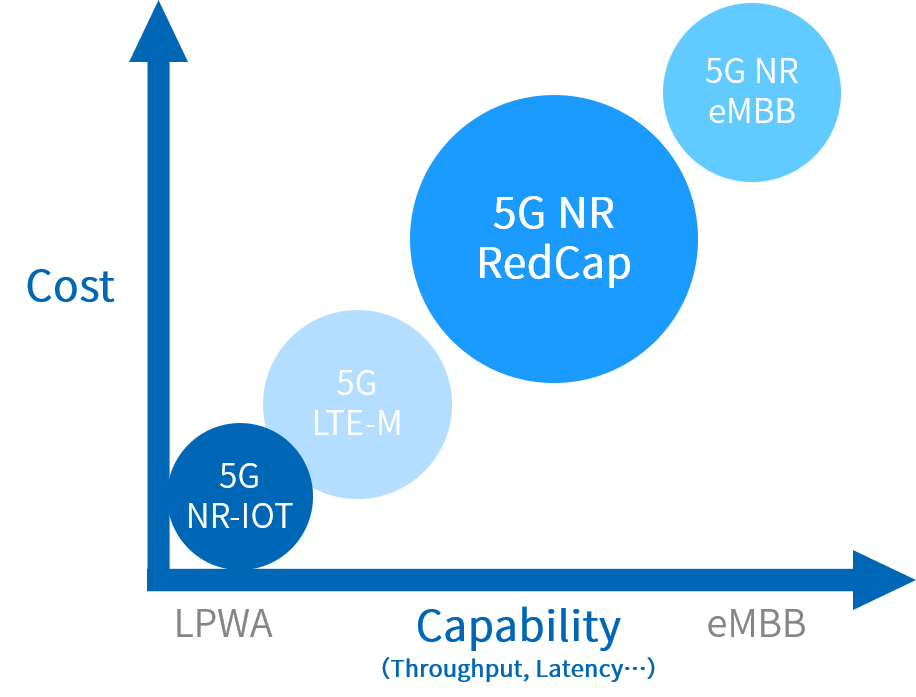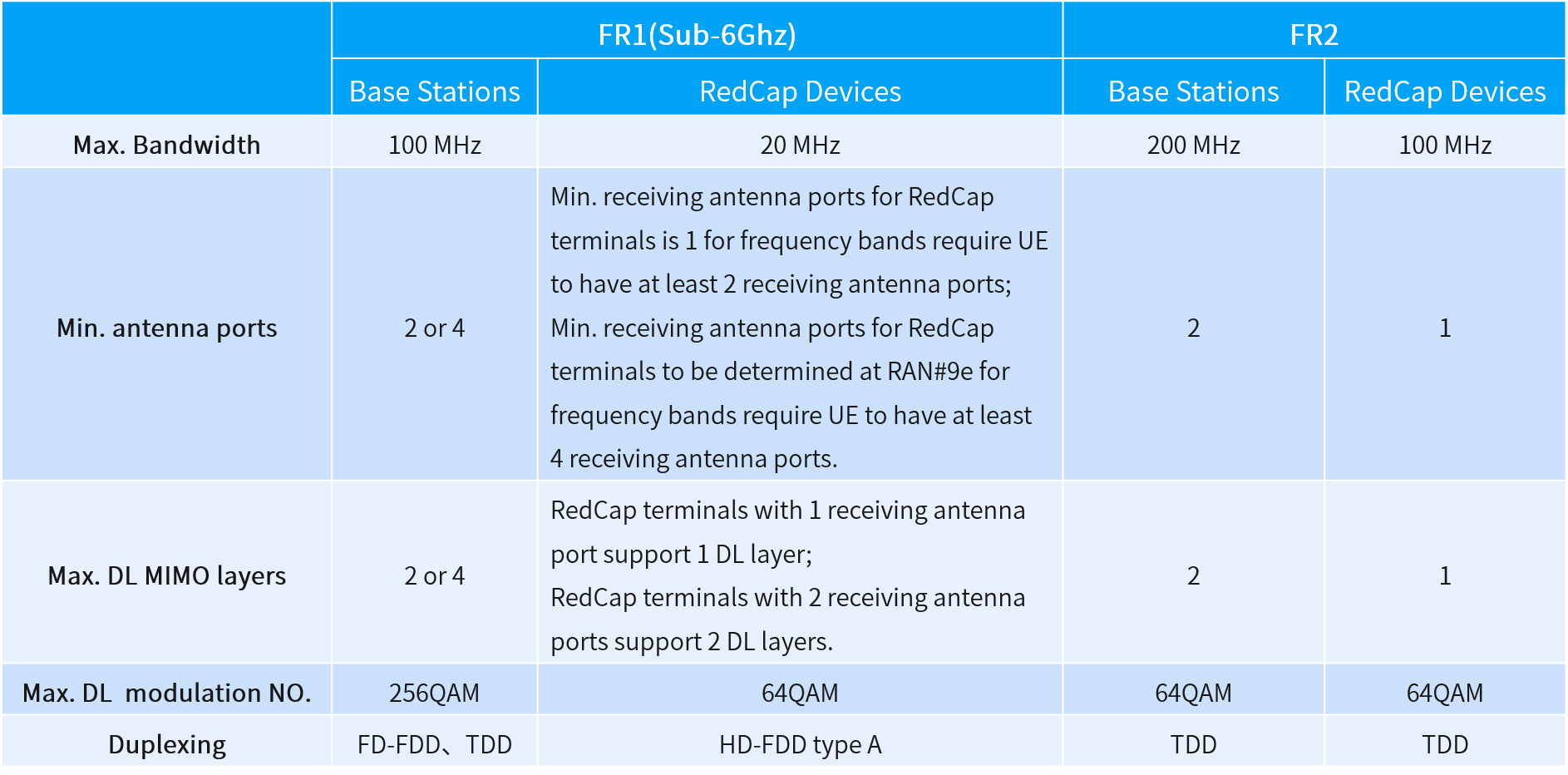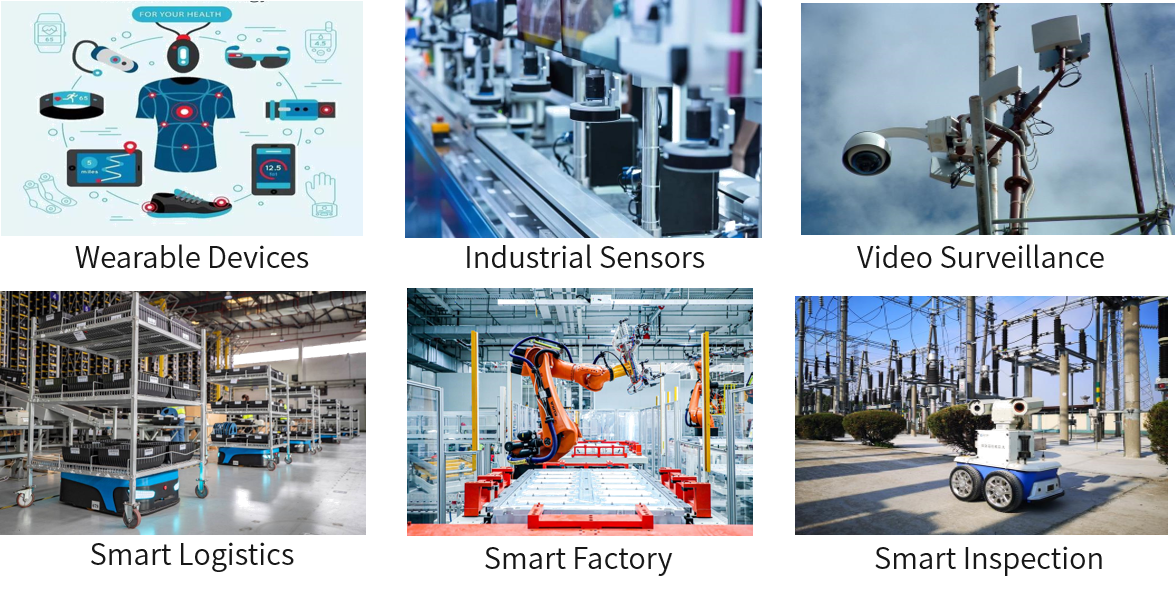RedCap Principles and Application Scenarios
1. Introduction
In the early days of 5G, the focus was mainly on high bandwidth and low latency. However, the design of early 5G chips and terminals was extremely complex, with high R&D investment and terminal costs that made many practical deployment scenarios unaffordable. For many application scenarios, it is necessary to effectively balance the performance of 5G devices in terms of speed, performance, power consumption, and cost. Based on this practical demand, RedCap was born. In June 2022, with the freeze of 3GPP Rel-17, the first version of the 5G RedCap standard was officially established. As a leading provider of 5G base station solutions, SageRAN continues to research and layout cutting-edge technologies such as 5G RedCap.
2. Definition of RedCap Technology
RedCap, short for Reduced Capability, is a new technology standard specifically researched and developed by 3GPP in the 5G R17 phase. It reduces terminal costs and power consumption by reducing terminal bandwidth, the number of transmitting and receiving antennas, and lowering modulation orders. The rate performance of RedCap is between LPWA (such as LTE-MTC/NB-IoT) and 5G eMBB, and is basically equivalent to 4G Cat.4; in terms of power consumption, it can achieve lower power consumption than 4G Cat.4 by superimposing 5G-related energy-saving technologies.

Figure 1: RedCap technology capability display
3. RadCap Characteristics and Implementation
(1) Technical Features
a. Low Cost: The maximum bandwidth requirement for RedCap devices in the sub-6GHz frequency band is reduced to 20MHz. RedCap reduces the required number of receiving antennas and device layers, supports 1R or 2R, and greatly reduces the cost of 5G device chips and modules. It is estimated that the cost of RedCap components is 5 times lower than that of eMBB components, and the price of components for large-scale commercial use can be comparable to Cat 4 components.
b. High Capacity and Efficient Coexistence: RedCap devices can operate on the 5G network through a separate initial BWP (Bandwidth Part) and synchronously independent signal defined by the cell, and coexist efficiently with eMBB devices, fully leveraging the advantages of high bandwidth and large capacity of 5G.
c. High Integration: RedCap data can have the ability to receive and transmit on different frequencies, making connections more integrated and devices more compact.
d. Multi-function: Low latency, slicing, positioning, low power consumption, etc.
(2) Technical Implementation
RedCap reduces the complexity of the baseband by reducing the bandwidth, reducing the number of MIMO layers, and relaxing the modulation order of the downlink link, reducing the minimum number of required receiving branches and allowing half-duplex (HD) operation in all frequency bands, thereby reducing the material cost of antennas and RF components. As shown in Figure 2, in R17, RedCap mainly cuts the following functions, reducing terminal complexity and cost by 65%.

Figure 2: Comparison of RedCap devices and traditional 5G devices
(3) Application Scenarios
According to the 3GPP R17 standard, RedCap mainly supports three major business scenarios: wearable devices, industrial sensors, and video surveillance. The specific network requirements for these three scenarios are shown in Figure 3:

Figure 3: Network capabilities required by the three industries
a. Wearable Devices
As people's attention to health increases, smart watches, smart bracelets, chronic disease monitoring devices, medical monitoring devices, and other products have been widely popularized. In the iterative process of these products, stronger network connectivity, lower power consumption, smaller device size, and richer software functionality are urgently needed. After taking over the 2G network upgrade, LTE Cat.1 gradually expands its application scenarios, and also lays a good foundation for 5G RedCap in the wearable field.
b. Industrial Sensors
5G connectivity has become a catalyst for a new round of industrial Internet and digital waves, which can flexibly deploy networks, improve production efficiency, reduce maintenance costs, and ensure operational safety. In these application scenarios, there are a large number of temperature and humidity sensors, pressure sensors, acceleration sensors, remote controllers, etc. These scenarios require higher network service quality than LPWAN (including NB-IoT, e-MTC, etc.), but lower than the capabilities of URLLC and eMBB.
c. Video Surveillance
In the field of smart cities, it covers data collection and processing in various vertical application industries, in order to more effectively monitor and control city resources and provide various convenient services for city residents. For example, in the deployment of video cameras, the cost of wired deployment is becoming higher and higher, and wireless deployment is becoming more and more popular. It involves multiple scenarios such as city traffic, city security, and city management, as well as applications such as smart factories, home security, and office environments.
d. Others
In addition to the above three major scenarios, RedCap can also be applied in the fields of smart logistics, smart power, smart inspection, and smart manufacturing.

Figure 4: Main application scenarios of RedCap
4. RedCap Capabilities of SageRAN
According to industry institutions, RedCap is expected to have commercial products by the first half of 2024, attracting more attention and investment from industry customers. Since 2022, SageRAN has been continuously deepening its RedCap technology and is expected to release a protocol stack version that supports R17 RedCap functionality by the end of 2023, completing the verification of RedCap's key technologies. In the future, SageRAN will work with industry partners to promote the commercial development of RedCap technology, accelerate the maturity of industry standards, networks, and devices, help deploy applications in specific industries, and promote the digital transformation and upgrading of industries.










